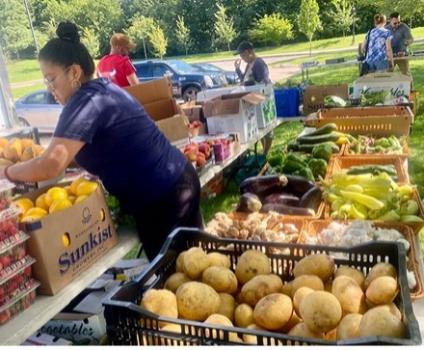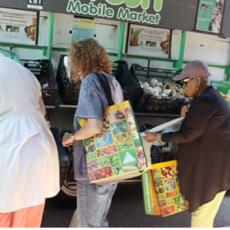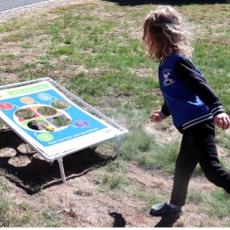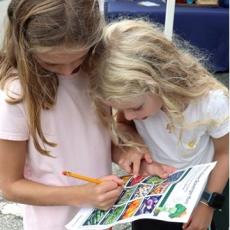“Thank you so much for bringing the farmers’ market to our neighborhood! I could never make it to the downtown market.” - Brockton community member
Partnerships between mobile farmer’s markets, the UMass Extension Nutrition Education’s SNAP- Ed Program and community organizations have made it possible for SNAP participants to access fresh healthy produce at their home, school, educational center, and councils on aging. For many SNAP participants this was the first opportunity to use their fruit and vegetable benefit provided through the Healthy Incentive program (HIP). Depending on the household size, this benefit offers $40-80 per month to purchase fruits and vegetables.
Many SNAP participants cited lack of transportation as a barrier to reaching markets. Housebound seniors were completely shut out, and people with disabilities had concerns about walking around at a traditional farmers’ market and carrying home bulky bags of produce. These challenges resulted in participants not utilizing their HIP benefits for fruits and vegetables. In addition, farmers reported having difficulty reaching SNAP recipients in a variety of locations.
This dilemma presented an excellent opportunity for the UMass Extension Nutrition Education’s SNAP- Ed Program to partner with Patti’s Patch Farm, local public and private low-income housing authorities, councils on aging, and food distribution organizations to bring colorful mobile farmers’ markets to the doorsteps of underserved SNAP participants. They can now participate in the joyful atmosphere of a fresh produce market where they live and learn while utilizing their HIP benefits. In 2023, monthly markets in Plymouth and Wareham saw over 1,268 HIP purchases which totaled approximately $38,040 in redemptions. In Brockton, the Saturday School Community Markets had over 360 HIP purchases each month averaging $14,400. Locally-grown kale, collard greens, potatoes, tomatoes, carrots, cantaloupe, apples and berries were sought-after among SNAP participants. Tropical produce including yam, cassava, yuca, callaloo, mango, banana, pineapple, and Asian produce such as bok choy and daikon radish were also well liked.
The UMass Extension Nutrition Education Program educators presented cooking demonstrations to promote seasonal produce, offering delicious food samples and healthy recipes. The community atmosphere inspired participants to relax and interact. They told stories of growing food with their parents and grandparents as children, shared favorite family dishes they like to cook, and delighted in the farmers’ market experience. Children also enjoyed the energetic market atmosphere and were invited by nutrition educators to participate in learning and physical activities. The MyPlate bean bag toss is a favorite, along with the farmer’s market scavenger hunt, and physical activities using hula-hoops and jump ropes.
Next year, the UMass Extension Nutrition Education Program is looking forward to building new partnerships with farmers and community organizations with a shared goal to connect SNAP participants with the opportunity to access fresh fruits and vegetables where they live, work, and play. The need for additional markets is profound. Each market we participated in generated a request for another market at a new location. The value of mobile farmers’ markets is two-fold: They improve SNAP participants access to healthy fresh fruits and vegetables where they are, and they provide space for valuable social experiences with community members of all ages.



